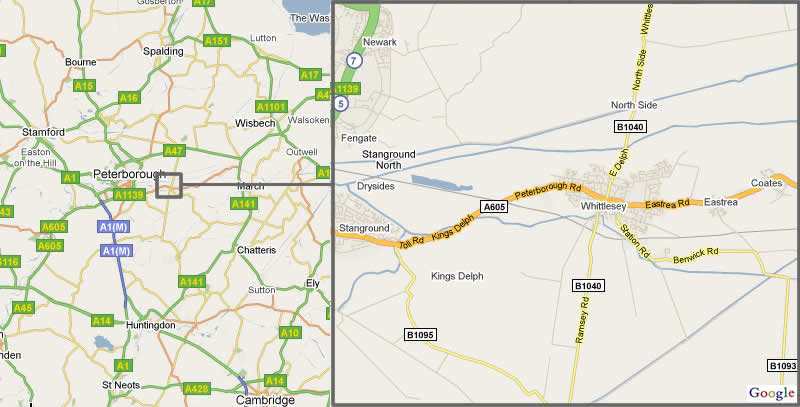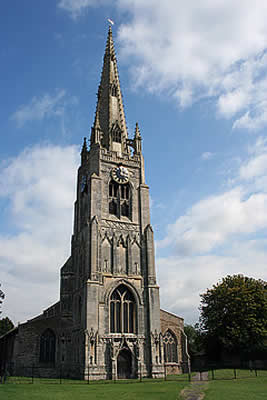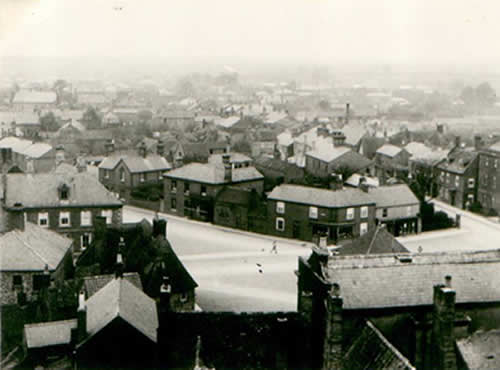
Whittlesey, Cambridgeshire
Whittlesey (historically known as Whittlesea - the name of the railway station is still spelt this way - or Witesie) appears in the Domesday Book as Witesie, but it is probable that the name derives from Whittle's Ea, where Ea is a Saxon term for an island. Indeed the land was once owned and presided over by a man named 'Whittle', so the name literally translates as 'Whittle's Island'. Before the draining of the fens, Whittlesey was an island of dry ground surrounded by the marshy fens. Excavations of nearby Flag Fen indicate thriving local settlements as far back as 1000 BC. In more recent times Whittlesey was linked to Peterborough in the west and March in the east by the Roman Fen Causeway, probably built in the 1st century AD, and Roman artifacts have been recovered at nearby Eldernell. At one time Whittlesey is thought to have had its own abbey, but subsequently the town's two parishes of St Mary's and St Andrew's were controlled by the abbeys in Thorney and Ely respectively until the Dissolution of the Monasteries (c.1540). St Mary's church dates back to the fifteenth century, but the majority of the building is later, and the church now boasts one of the largest buttressed spires in Cambridgeshire. St Andrew's is a mixture of perpendicular and decorated styles and has records back to 1635. The parishes were combined for administrative purposes by the Whittlesey Improvement Act of 1849. Despite the proximity of Peterborough, Whittlesey is in the Diocese of Ely. Until its draining in 1851, nearby Whittlesey Mere was the largest lake in southern England, and the town is still accessible by water, connected to the river Nene by King's Dyke which forms part of the Nene Ouse Navigation link. Moorings can be found at Ashline Lock alongside the Manor Leisure Centre's cricket and football pitches. Other notable historic features include the market cross, known as the buttercross, dating back to 1680, the old town hall (once also serving as the fire station, and now the town museum) of 1857 and a number of thatched mud walls. |
 St. Mary's Church |
 North Side of Market Place, 1910 |
|
|